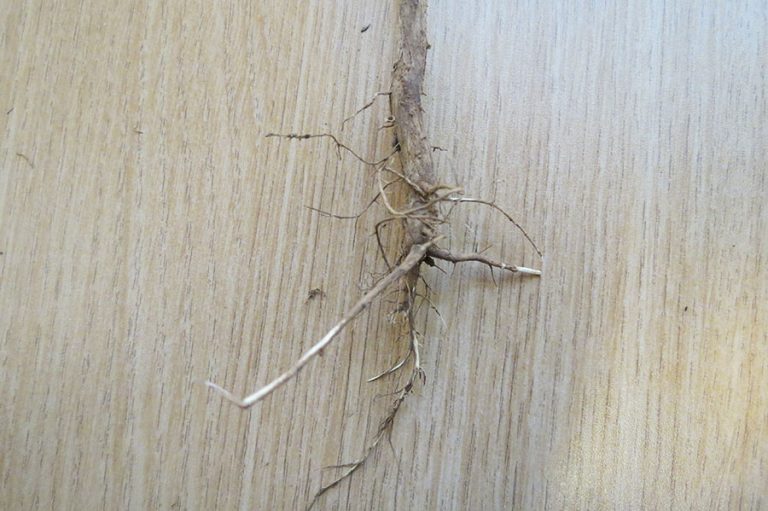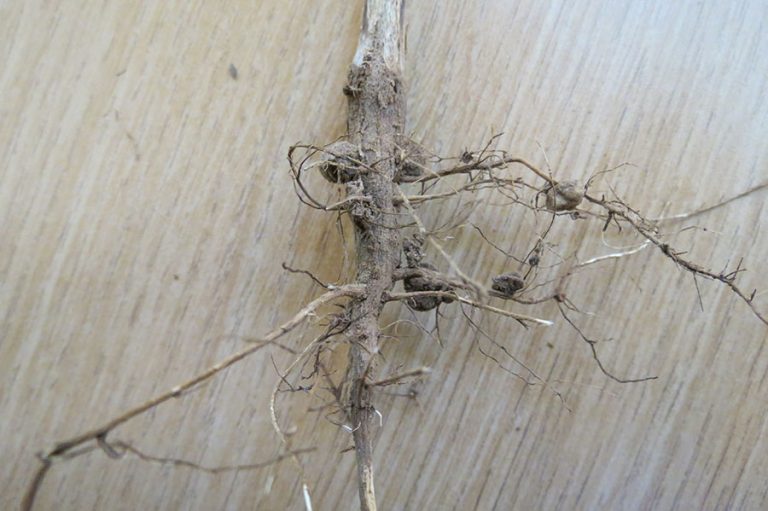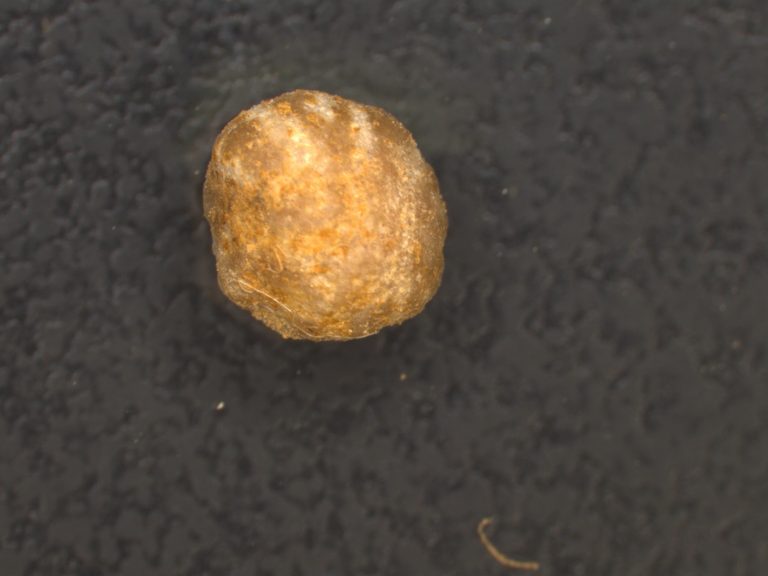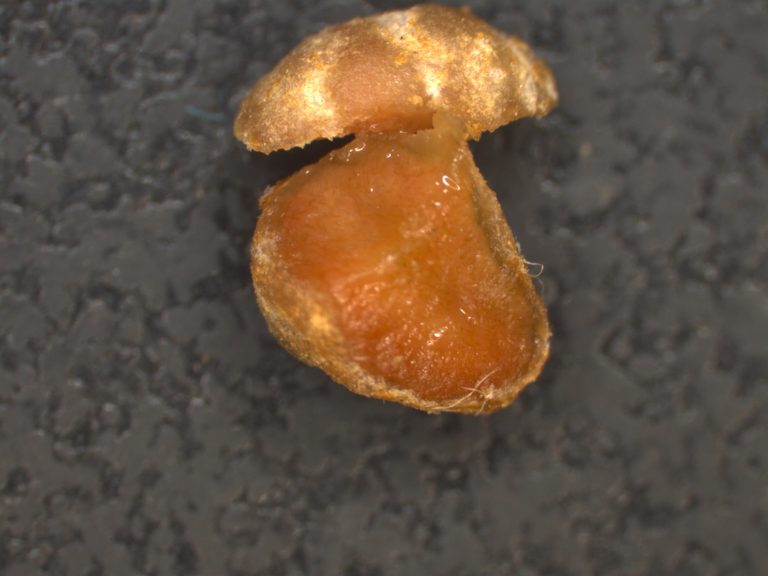Understanding Soybean Nodulation and Inoculation
Soybeans require between four and five pounds of nitrogen (N), to successfully produce one bushel of grain, which is a significant amount. Fortunately, N is not typically managed in soybeans because they can produce 50 percent to 90 percent of required N through a symbiotic (mutually beneficial) relationship with the bacteria Rhizobium. These bacteria are unicellular organisms that invade the soybean plant through the root hairs and form special structures called nodules. Within these nodules, the bacteria can convert gaseous atmospheric N into a form that can be utilized within the soybean plant. In exchange for available N, the soybean plants provide the bacterium with the proper environment and energy source needed for continued fixation.
When to Inoculate Soybeans
Nitrogen-fixing bacteria are plant specific, so while Oklahoma soils can contain many N-fixing bacteria, most of these cannot successfully inoculate soybeans. The species of bacteria needed to inoculate soybeans are not native to Oklahoma soils, so any field where soybeans have never been produced must have inoculum added. As a general guideline, fields out of soybean production for two to five years should have these bacteria added to the soil or the seed, a practice know as inoculation. In fields with historic soybean production, adequate levels of soybean specific Rhizobium species may be present in the soil. Compared to native bacteria populations, the non-native Rhizobium species are not well adapted to Oklahoma soils and, therefore, cannot compete in the natural ecosystem with the native species.
Even if soybeans have been grown recently, nodulating bacteria levels could still be low. Rhizobium is living bacteria, so environmental conditions that inhibit growth can severely decrease bacteria populations. Soil pH is one of the most influential factors in N-fixing bacterial survival. While an extremely high pH can decrease Rhizobium survival, few soils in Oklahoma will fit into this pH range. The major concern with Oklahoma soils will be low pHs. Most nodulating bacteria thrive between 5.8 and near neutral (~7.0) soil pH. If soils are below this value, it is recommended lime be applied to remediate the low pH.
The best management practice recommendation — if there is ever a doubt about the ability for the soil to supply the needed bacteria, always inoculate. Reasons for adding inoculum should include: no soybean production in past two years, soil pH concerns, excessive wet or dry periods and poor nodulation on a previous soybean crop. The only risk of application is paying a meager amount for a product not needed, while the risk associated with not applying inoculum is significant yield loss. Therefore, the risks often outweigh the cost of application, which is typically less than 2 percent of the total soybean production costs.
Inoculating Soybeans
As with any other agronomic input, proper management is vital to ensure the input pays off. Since these inoculants are live bacteria, storage and handling are the greatest concern. Inoculants should be placed in cool, dry environments away from sunlight. It cannot be stressed enough that these inoculants should never be left in a vehicle for long periods of time. In addition to excessive heat, excessive cold conditions can greatly decrease bacterial survivability; therefore, inoculants should never be frozen. Improper handling and storage of inoculants may decrease active, viable bacteria by more than 70 percent.
Care should be taken when applying inoculants on insecticide- and fungicide-treated seed. These seed treatments have the potential to decrease survivability of inoculum. As with any other product, read the label and follow any guidelines provided. If questions still exist, contact the local county Extension office for further information.
Nodulation of Current Soybeans
There are environments in which a properly inoculated soybean plant may not adequately nodulate. Two primary conditions resulting in poor nodulation in Oklahoma are acidic soils and extremes in soil moisture, both of which can be detrimental to nodulation. While Oklahoma rarely has prolonged periods of saturated soil conditions, very dry soils also can limit nodulation. Not only do the bacteria need water to survive, but it is also the method by which they move in the soil system. Therefore, in dry conditions, successful nodulation may be challenging. A third scenario where nodulation fails to occur is planting into a failed crop with high levels of residual N. High levels of soil N prevent the plants from needing the Rhizobium, therefore never fully supporting nodulation. Inoculum is a very sensitive product to both heat and light. Stored in the wrong conditions even for a short period of time can significantly reduce the likelihood of nodulation.
It is likely that any soybean crop expressing N deficiency symptoms has failed to nodulate properly. Nitrogen deficiencies in soybeans can be noted by lighter green leaves. Similar to N deficiency in corn and wheat, these symptoms will first appear on the oldest leaves. However, since N deficiency in soybeans can be difficult to diagnosis, tissue testing is recommended to confirm N deficiency.
Symptoms of deficiency make nodulation issues more evident; however, issues with nodulation can occur with little or no foliar symptomology. The best method to determine if the soybeans are properly nodulated is to look at the root system. While this might seem like an easy task, removing the soybean plant from the soil to see the nodules can be challenging. The soybean root system needs to be as undisturbed as possible to get a good look. Pulling the soybean plant from the surface will often remove several nodules from the root systems, especially from the root hairs, which can result in an underestimation of nodules Figure 1. This is especially true in higher clay content soils because pulling the soybean plant can strip all the nodules off the root system. The best method is to use a shovel and remove not only a large part of the rooting system but also the soil around the roots. Following removal, the soil should then be wash off or carefully removed.
Once the roots are removed, the nodules can be identified as small round growths on the soybean root. A properly nodulated soybean plant should contain between 25 and 100 nodules. These should not be confused with growths associated with nematodes; nodules are typically much larger. While the identification of nodules is important, just because nodules are present does not mean they are actively working. Nodules should be removed and split. If the nodules are red, pink or orange, then they are actively fixing N and are beneficial to the plant Figure 2. If the nodules are pale grey, brown or black, the nodules are not actively fixing N and determining the cause for the unproductive nodules should become the primary concern.
Timing is also a key issue. Nodules begin to form around the two or tree true trifoliate (V2 to V3) stage. Both the number of nodules and production of these nodules continues to increase and peaks between full flower (R2) and pod set (R5). Following this period, nodule activity sharply declines as the plant prepares for the final reproductive stages and senescence. Since the highest soybean N demand is from flower through pod set, it is critical to identify a nodulation issue prior to these stages so corrective action can be taken. With this in mind, poorly nodulated areas or fields should be identified by late vegetative to early flower stages.

Figure 1a. Soybean root that was pulled from the soil surface. Notice the lack of nodules on the roots.

Figure 1b. Adjacent soybean plant that was removed with a shovel. This plant indicates the previous plant had all the nodules removed.

Figure 2a. Image of a standard nodule removed from the root of an actively growing soybean plant.

Figure 2b. Image of a nodule actively fixing N. Note the red to orange color, inactive nodules would appear pale grey, brown or black.
Lack of Nodulation
If this issue is noticed within a growing season, little can be done to stimulate nodulation. However, if soybeans appear N stressed, additional N fertilizer can be applied to ensure the nutrient is not yield limiting. However, as one of the major benefits of soybeans production is the ability of the plant to fix and utilize its own N source, continual application of synthetic fertilizer will prove to be economically inefficient. In future years, inoculation will be needed to provide agronomic and economically sustainable soybean production.
Summary
Managing soybean N fixation through the use of inoculants can be both agronomically and economically beneficial, as the potential benefits far outweigh the cost of application. However, proper management is vital. Storage from purchase to application is one of the critical aspects that are often mismanaged. Inoculant should be stored in a cool (not warm or cold) environment away from sunlight. Additionally, when planting inoculated seed, producers should be conscious of the impact soil environmental conditions can have on soybean nodulation. Conditions such as excessively dry or wet soils, low or high soil pHs and soils with high residual NO3–, have the capacity to decrease the viability of the inoculum and limit or slow the nodulation process. These conditions might decrease the benefit of the added inoculum. However the benefits will still generally outweigh the cost of application, therefore should still be applied. Using these best management practices, inoculum products have the potential to make soybeans both an agronomically and economically viable crop in Oklahoma crop rotations.
Josh Lofton
Cropping Systems Specialist
Brian Arnall
Precision Nutrient Management Extension Specialist
